Wild grapes are vines with an incredible growth volume, reaching up to 50 feet (15m). The fruits look just the same as cultivated grapes but smaller in size. Wild grapes are edible.
Once they’ve taken root, their root systems can dominate for years. For this reason, some gardeners consider wild grapes to be weeds.
Wild grapes anchor onto branches or other surfaces through their tendrils. Wild grapes are usually higher and thicker than their over-cultivated counterparts.
Wild grape flowers bloom in early summer. They are tiny, white, and grow in bunches. Once blooming is complete, hard, green grapes are left behind.
What Are You Foraging For Right Now?
We're thrilled to hear your ideas. What would you like to submit today? Feel free to share your thoughts and experiences with us.
Common Types of Wild Grapes
North American wild grapes all sport large, three-lobed leaves. The most common wild grape species found in North America include:
- Riverbank grape (Vitis riparia)
- Fox grape (Vitis labrusca)
- Summer grape (Vitis aestivalis)
- California wild grape (Vitis californica)
With over 60 more native species, it’s no wonder they grow everywhere in the United States.
All of these species vary in their growth conditions. Some wild grapes prefer sandy, dry soil. Others need humid and hot conditions.
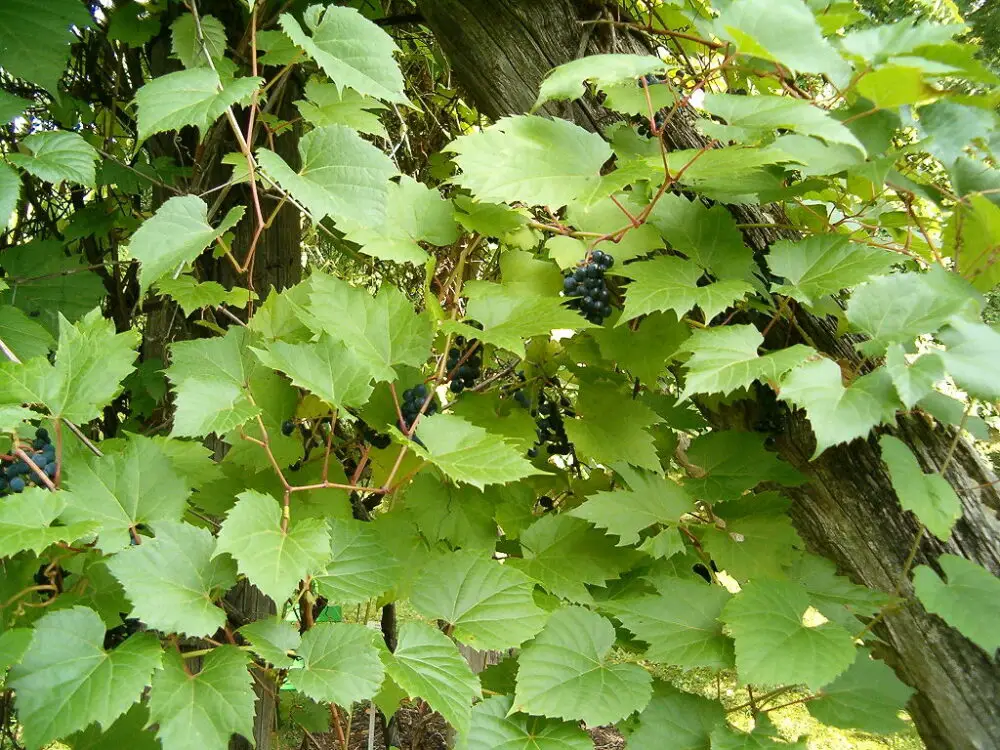

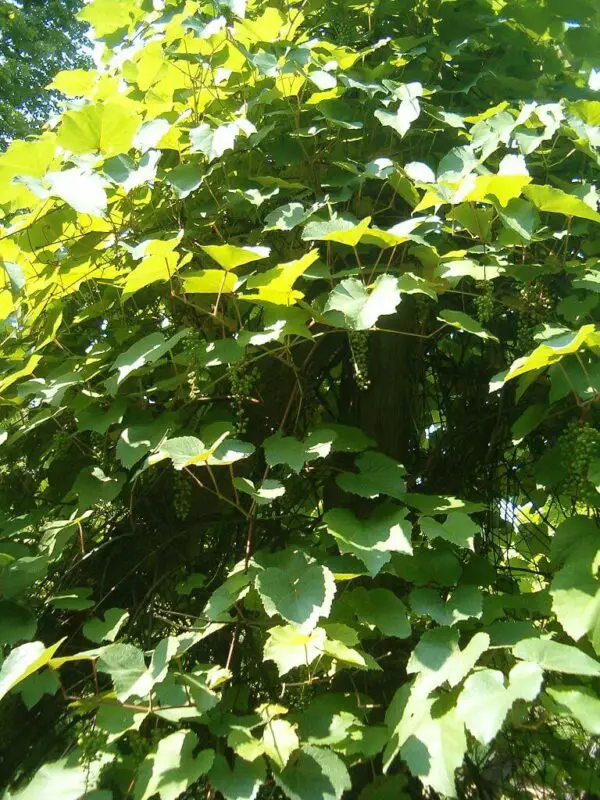
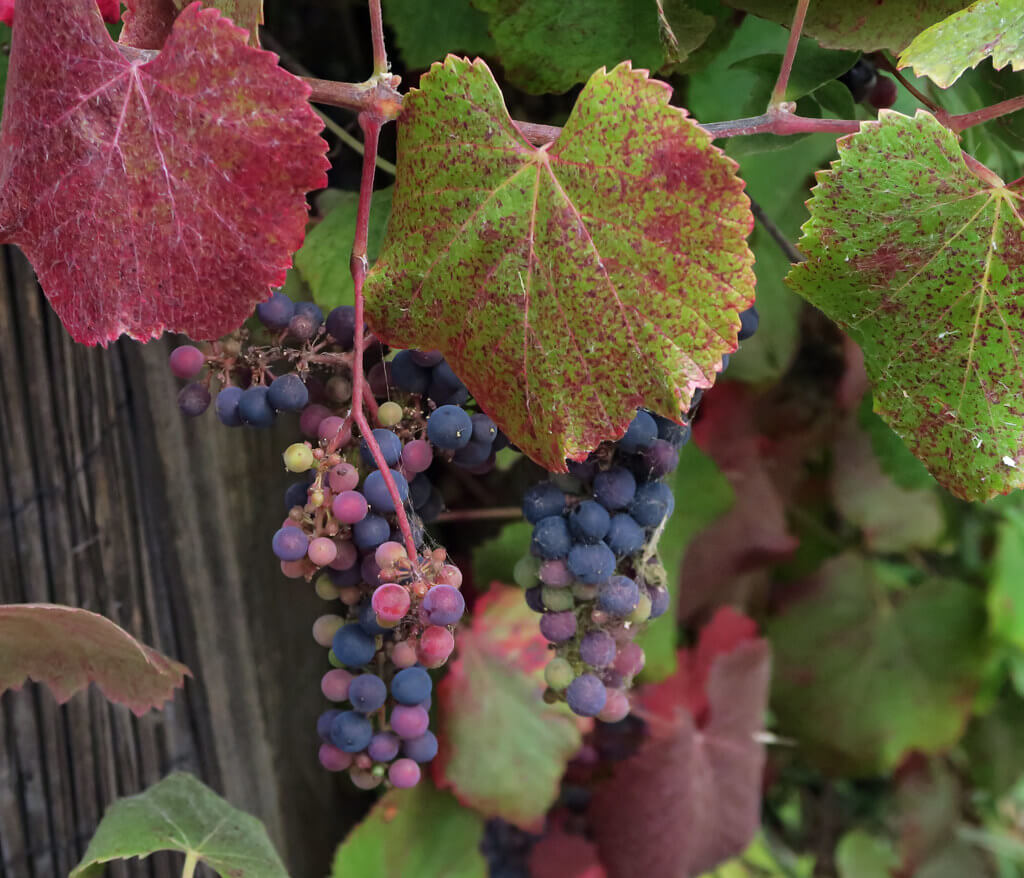
What is the Difference Between a Grape and a Wild Grape?
Wild grapes and cultivated grapes share many similarities but with some key differences, which include:
- Size – wild grapes are smaller than domesticated grapes.
- Sweetness – domesticated grapes can be sweeter and less tangy.
- Propagation – wild grapes grow much easier than their cultivars. They are immense growers, sometimes growing too intensely.
- Pest and disease resistance – wild grapes grow quickly and are less susceptible to pests and diseases than their cultivated grape cultivars.
- Flowers – most wild grape vines produce only male or female flowers, not both. Their flowers are super fragrant.
Identifying Wild Grapes
Wild grapes look just the same as cultivated grapes but smaller in size.
You can quickly identify wild grapes in late summer to early fall by their berries. They are similar in size to a blueberry, with the same amount of flesh but with a deep, purplish color.
*If you’re interested in other berry-like edible fruits, I recommend reading about serviceberries.
Because some lookalike vines are poisonous or taste plain nasty, it’s best to know how to identify wild grapes.
When foraging wild grapes, look for the below tell-tale signs:
- Large, three-lobed leaves that sport veining.
- Its veining extends from the petiole.
- The bark is gray or brown and shredded with forked tendrils for climbing.
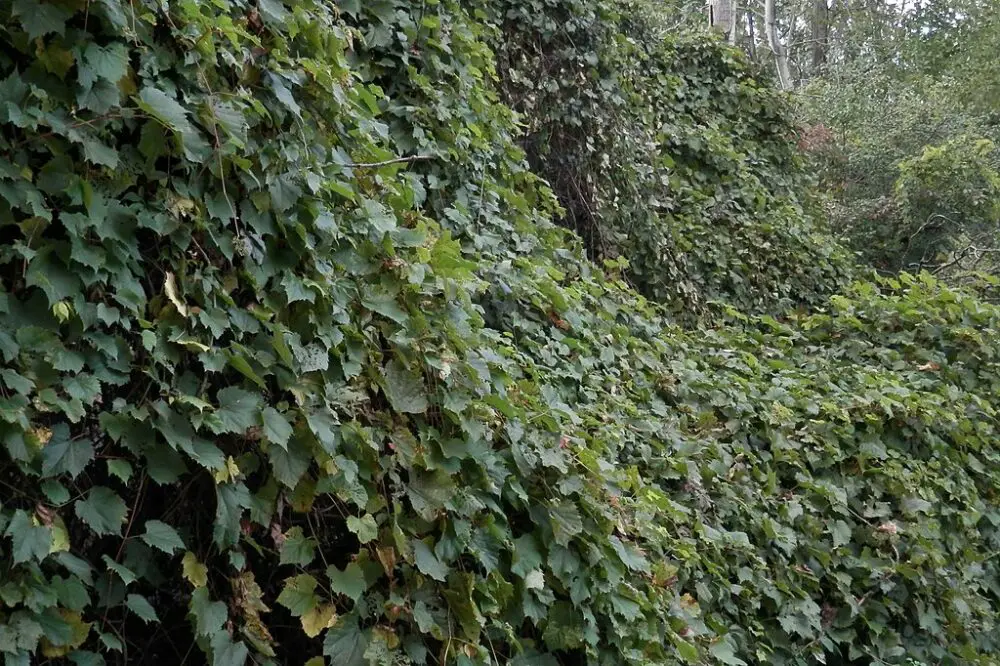
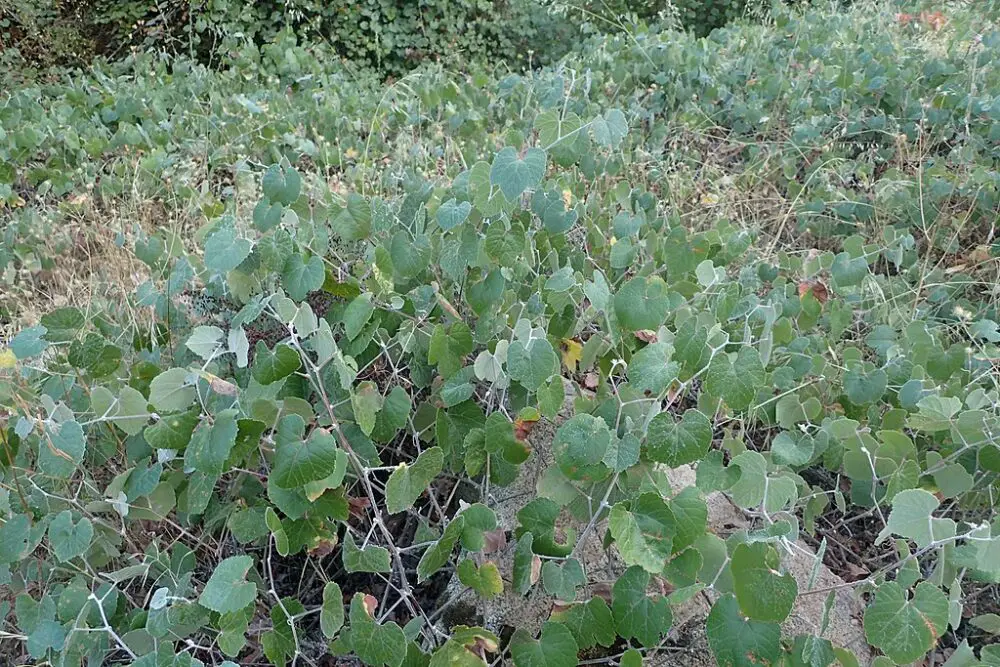
Can You Eat Wild Grapes?
Wild grapes are edible wild fruits. But be careful of their tangy nature when eaten right off the vine.
Although the grapes taste less sour after the first frost, they may still be too sour for some.
Where to Find Wild Grapes
America, especially North America, is home to dozens of varieties of wild grapes.
Wild grapes are relatively easy to forage as this perennial climbing vine is found growing;
- In fencerows
- Alongside riverbanks, streams, and ponds
- In the woods and hardwood forests, clambering up trees
- In landscaping
- Alongside roads
Wild grapes are also often planted in:
- Tree plantations
- Vineyards
- Orchards
Because wild grapes are native vine grapes lacking a solid, upright trunk, they can attach to and move along anything they can stick to.
They can grow to 80 or 100 feet as they overtake trees and bushes.
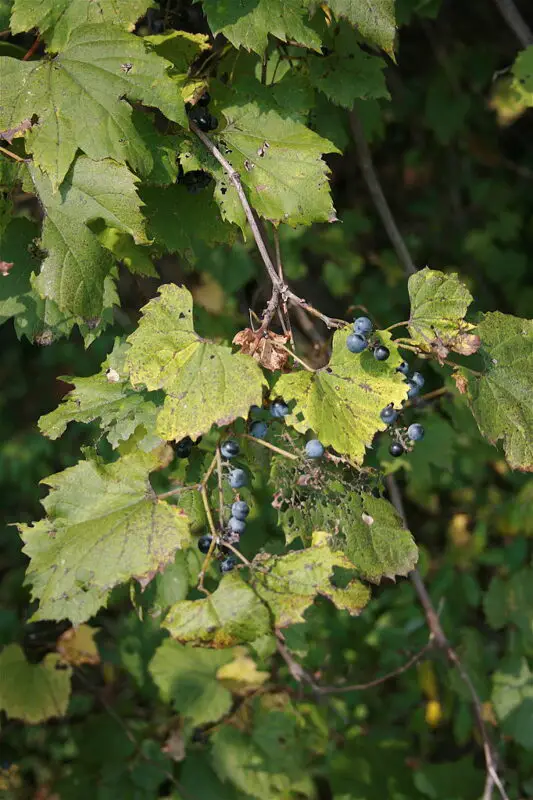
Are there any Poisonous or Nonpoisonous Lookalikes?
Most of the common wild grape lookalikes are all poisonous. This is why, when foraging wild grapes, ask yourself whether there are toxic wild grapes around.
The below should help you answer this question:
- Canadian moonseed is another native grape that looks similar but is incredibly toxic. When foraging, you can tell the two apart because the Canadian moonseed does not sport toothed leaves or forked tendrils. Canadian moonseed also has smooth foliage.
- Porcelain berry is similar in appearance due to its grape-like leaves, but you can tell the difference thanks to its berries. They are white and blue just before opening. In contrast, unripe wild grapes are green. Although still classed as toxic, the porcelain berry’s toxicity is low in severity.
- Virgin creeper is one to avoid as the leaves and berries are poisonous. The leaves contain the irritating oil found in poison ivy, and the berries contain high levels of moderately toxic oxalic acid.
- Pokeweed should be avoided in every form as it is poisonous, especially the root. People have reported severe poisoning from drinking tea brewed from pokeweed leaves and roots.
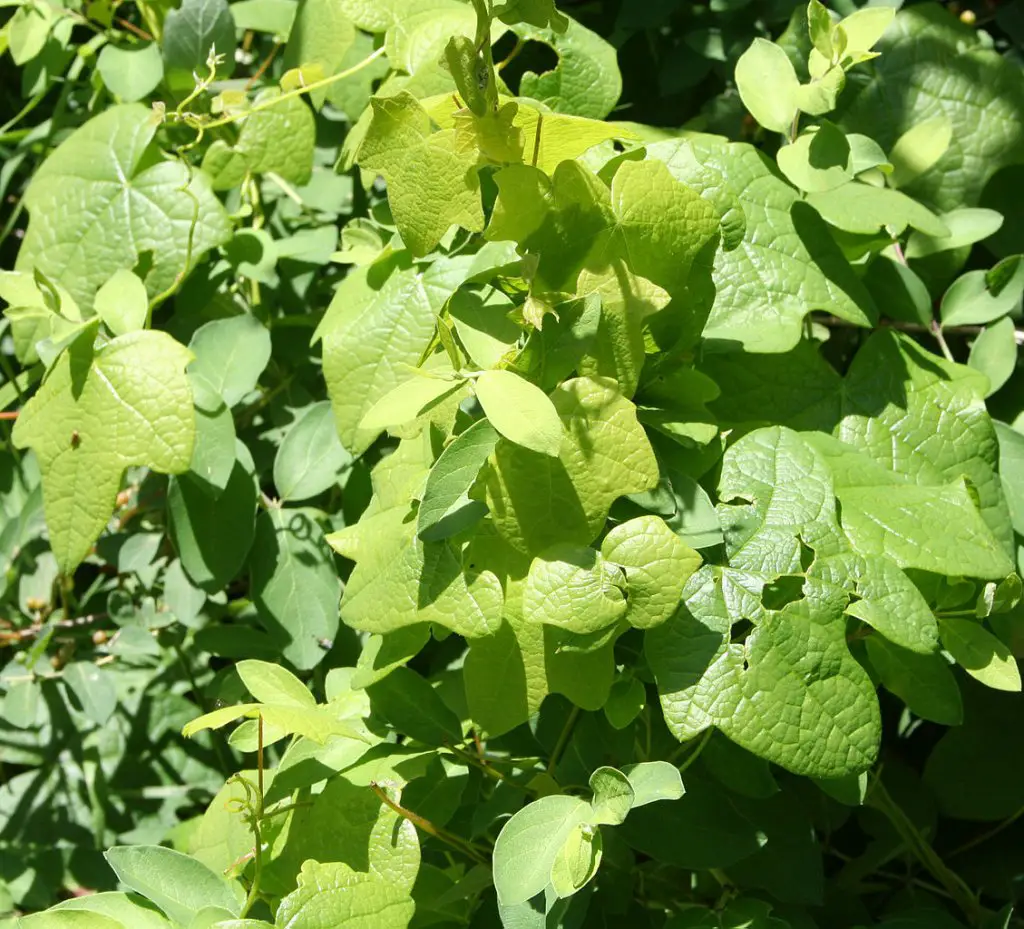
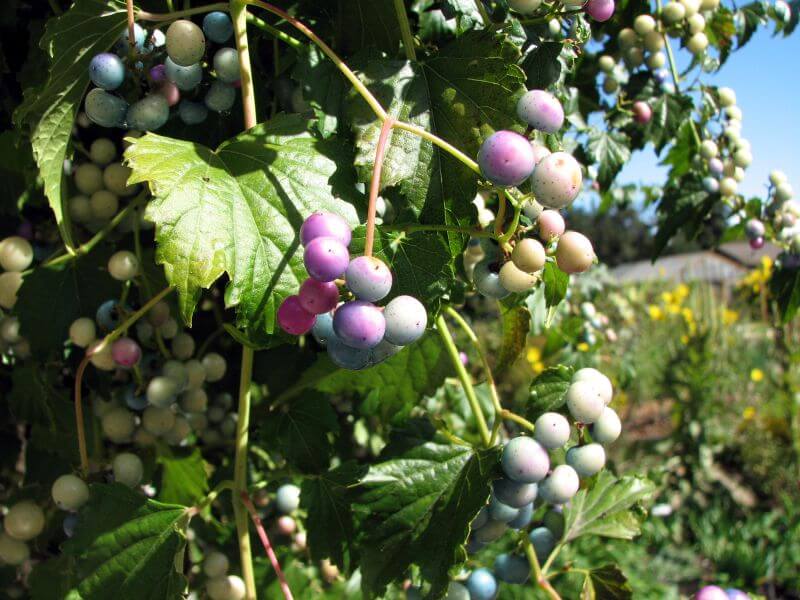
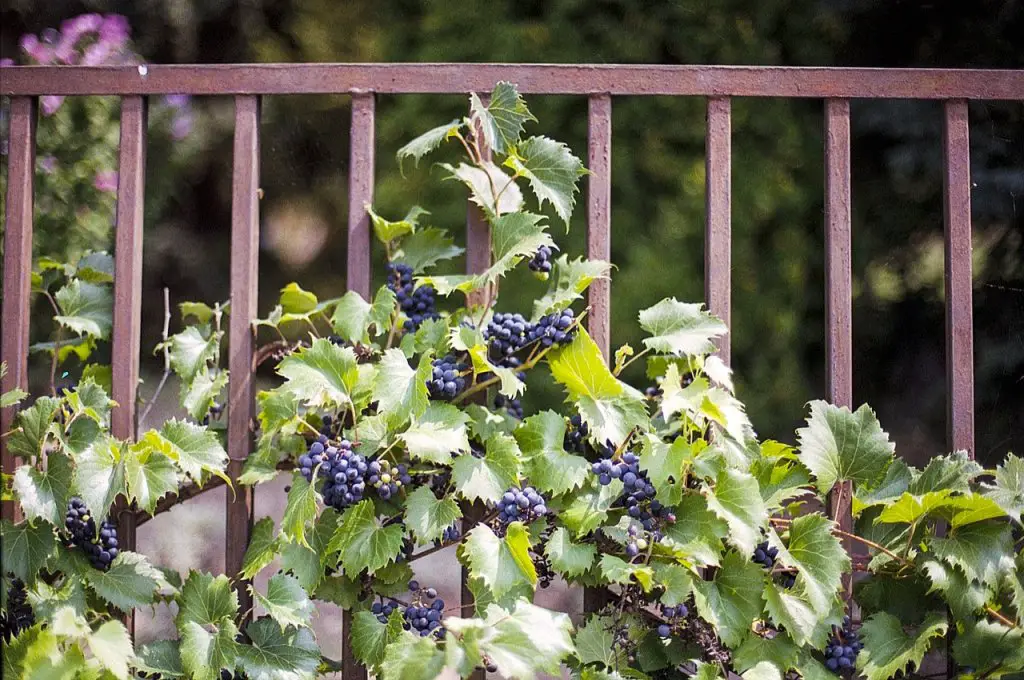

Always make sure you do your research before foraging for any potentially toxic wild plants.
Getting into the great, wet outdoors in search of edible plants, herbs, fruits and fungi is one of Sarah’s favorite outdoor pursuits. She thinks there’s nothing better than combining her passion for hiking with the start of the foraging season. Sarah’s definitely not afraid of a little rain and dirt, it’s all part of the fun.

